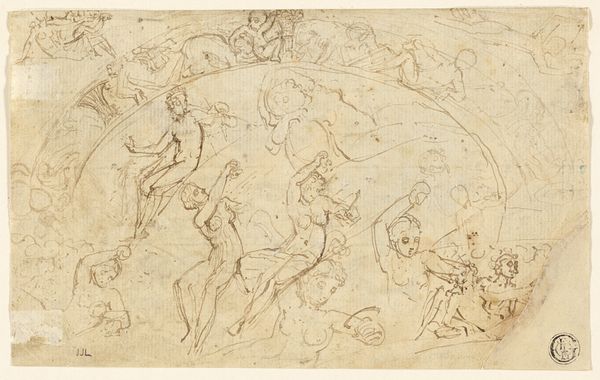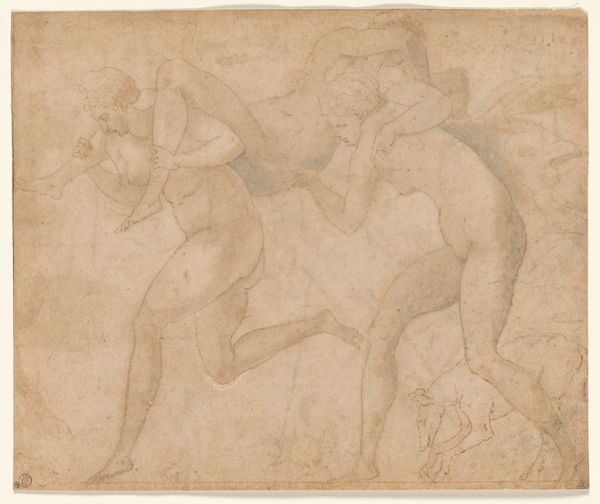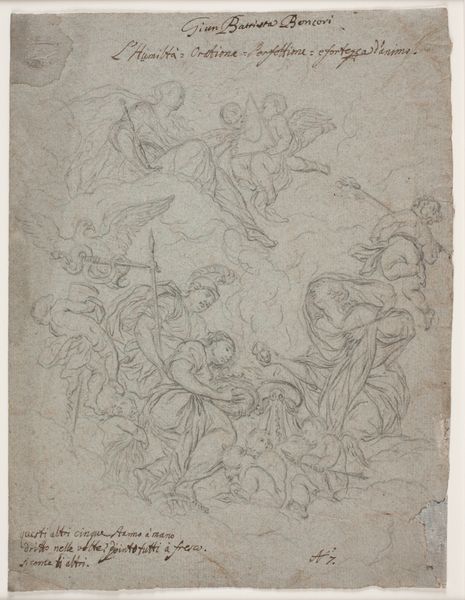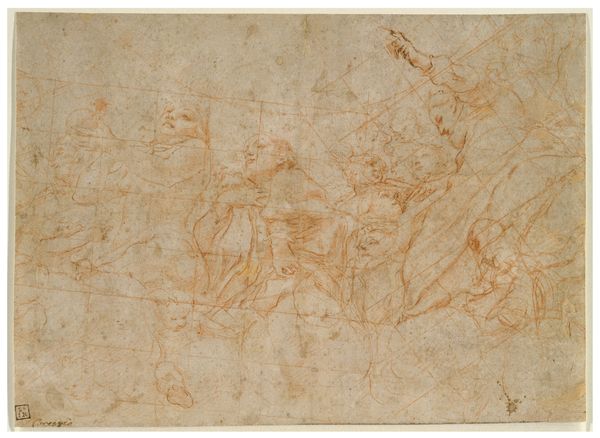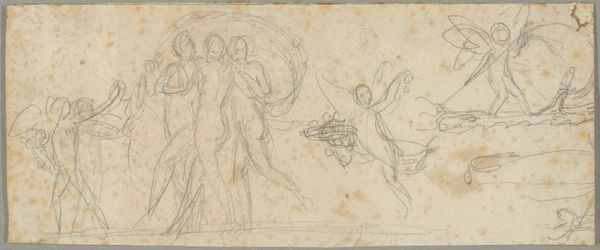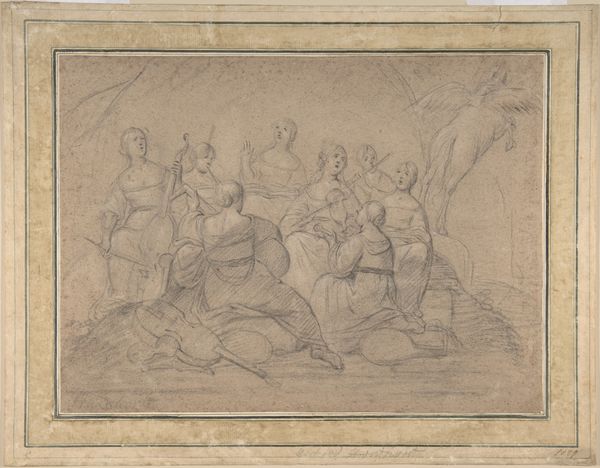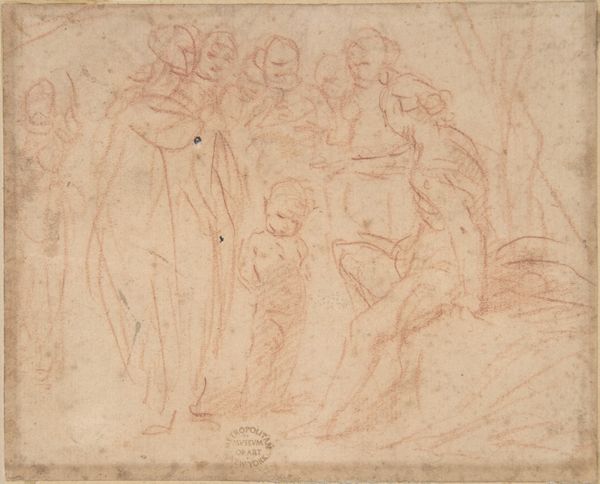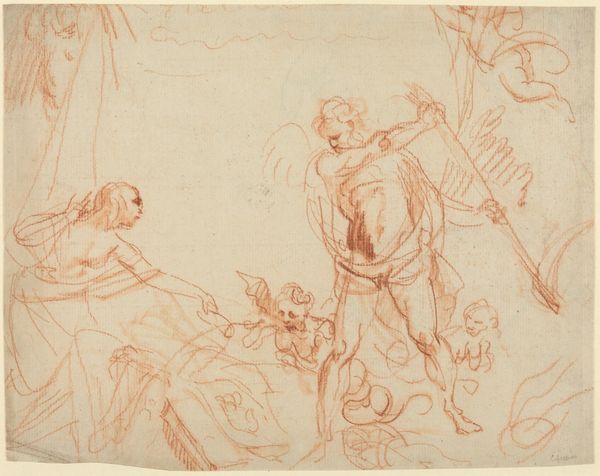
drawing, paper
#
portrait
#
drawing
#
figuration
#
paper
#
11_renaissance
#
italian-renaissance
Dimensions: 4-3/8 x 5-3/8 in. (11.1 x 13.7 cm)
Copyright: Public Domain
Editor: Here we have an Italian Renaissance drawing from around 1600, titled *Three Female Figures and Seated Putto*. It’s done in red chalk on paper. I'm struck by the somewhat idealized portrayal of the women. How would you interpret this work? Curator: It's interesting that you point out the idealization. Consider the period, a time still deeply rooted in patriarchal structures and expectations around female beauty and behavior. The drawing presents an image of women that reflects this ideal. But, who determined these ideals, and whose gaze were they designed to please? Also, do you notice the poses they adopt? Are these natural or contrived? Editor: They do seem quite posed. I see what you mean. Curator: This artificiality invites us to question the power dynamics at play. Who controls the representation? Think about the male artists who, throughout the Renaissance, shaped the visual language surrounding women. Were these artists reflecting reality or constructing a fantasy? Is there any social messaging, or critique that we could interpret from their facial expressions? Editor: So, this drawing isn't just a depiction of figures, but a reflection of the male-dominated society that created it? It also shapes perspectives about feminine power in society, isn’t it? Curator: Precisely! And examining these historical depictions allows us to critically analyze the representation of women throughout art history, while prompting dialogue on how such representations shape our perceptions today. We need to critically look at their expressions and the implications that those expressions hold in Renaissance paintings. Editor: That's fascinating. I hadn’t thought of it that way. Thanks, I’ve learned so much! Curator: My pleasure. Thinking about historical context provides us with much deeper analyses.
Comments
No comments
Be the first to comment and join the conversation on the ultimate creative platform.

